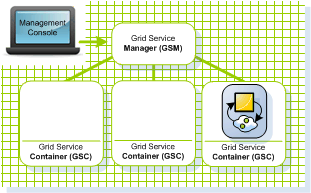Your First XAP Application
Summary: This tutorial explains how to build your first GigaSpaces Application in 4 easy steps, from basic API usage to scaling your application and making it highly available
Before You Begin - Set Up Your Environment
Follow these instructions to download and install the latest version of XAP.
|The sample application used in all steps is located in
Quick Start Guide Steps
We recommend that you follow these 4 basic tutorials in the specified order:

Using Processing Units for Scaling ~5 minutes
A short introduction that shows what a Processing Unit is, and how it is used for scaling your applications
</div>

Creating the Hello World Application ~10 minutes
How to create, deploy, run and monitor your Processing Unit
. How to Create a scalable application using Processing Units
. How to run a Processing Unit within your IDE

</div>

Deploying the Hello World Application onto the ServiceGrid ~10 minutes
How to deploy the Hello World Processing Unit onto the grid enabled infrastructure (the ServiceGrid) to enable instant fail-over, recovery, SLA management and runtime monitoring capabilities for your application
. What the Service Grid is
. How to Start the Service Grid
. ~How to Use the Grid Manager (GSM) and the Grid Container(GSC)~ . How to Deploy an application onto the Service Grid with the Management UI
. How to Monitor the Service Grid and deployed applications during runtime

</div>

Scaling the Hello World Application ~10 minutes
How to scale the Hello World Processing Unit application
. How to use GigaSpaces’ clustering and partitioning capabilities to scale the Hello World Processing Unit application

</div>
Go Beyond the Basics
After you have learned the basics, you can go to the more advanced tutorials to dive into the details, and learn how to implement real world scenarios.
Back to Quick Start Guide Home

